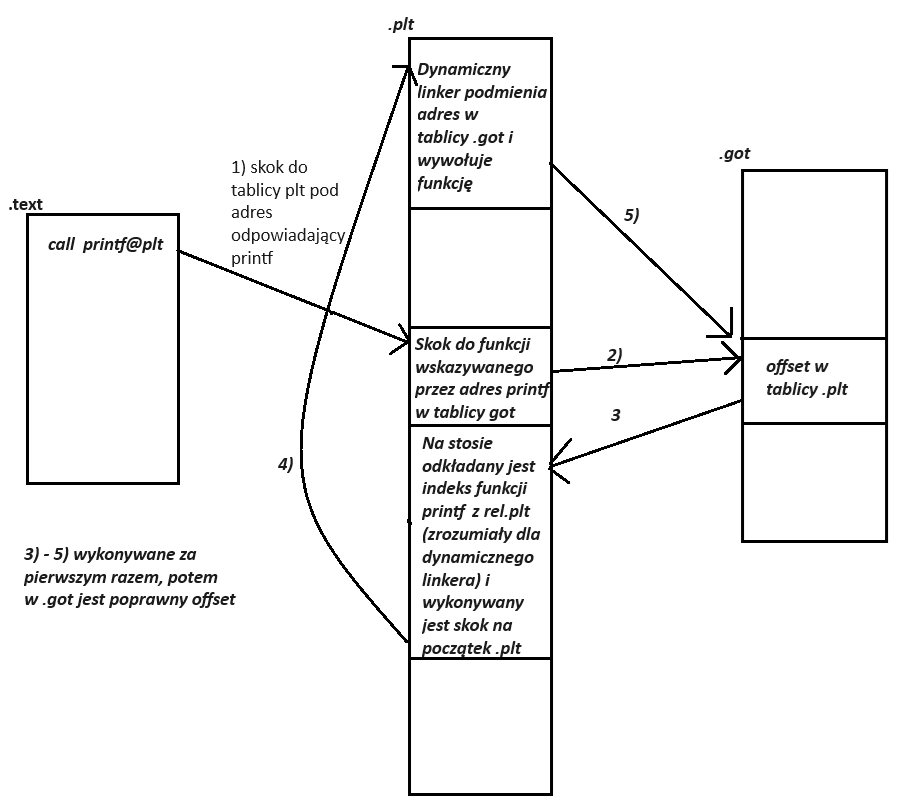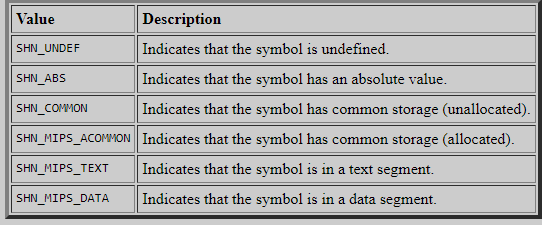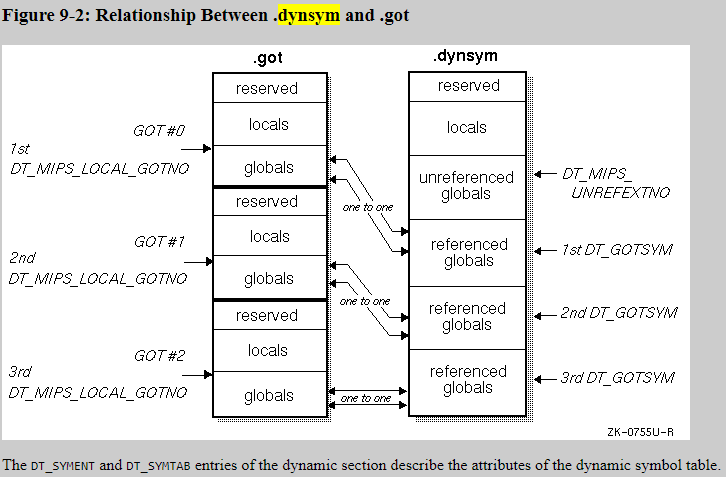Wiki
Clone wikichocos / ELF sekcje
Info about ELF format.
Wykorzystywane przez nas
.text
kod (instrukcje) programu
.data
zmienne globalne RAM zainicjalizowane
.bss
zmienne globalne RAM zerowe lub niezainicjalizowane
.rodata
zmienne stałe - TODO: dlaczego nie używamy tego? Stałe są w sekcji .text?
.got
Global Offset Table
Wykorzystywane przez nas niestandardowe
.syscalls
TBD
.header
TBD
static const oC_Program_Header_t ProgramHeader __attribute__ ((section (".header"))) = { .HeaderSize = sizeof(oC_Program_Header_t) , .SectionsDefinitionSize = sizeof(oC_Program_Sections_t) , .SystemCallDefinitionSize = sizeof(oC_SystemCall_t) , .MagicString = PROGRAM_HEADER_MAGIC_STRING , .Version = oC_VERSION , .MachineName = TO_STRING(MACHINE_NAME) , .SystemCalls = SystemCalls , .NumberOfSystemCalls = oC_ARRAY_SIZE(SystemCalls) , .ProgramRegistration = { .Name = TO_STRING(oC_PROGRAM_NAME) , .Priority = 0 , .MainFunction = MainFunction , .StdInName = TO_STRING(oC_STDIN), .StdOutName = TO_STRING(oC_STDOUT), .StdErrName = TO_STRING(oC_STDERR), .HeapMapSize = HEAP_MAP_SIZE, .ThreadStackSize = PROCESS_STACK_SIZE, #ifdef ALLOCATION_LIMIT .AllocationLimit = ALLOCATION_LIMIT, #else .AllocationLimit = 0 , #endif #ifdef TRACK_ALLOCATION .TrackAllocations = true, #else .TrackAllocations = false, #endif #ifdef ARGUMENTS_FORMAT_FILE .ArgumentsFormatFilePath = TO_STRING(ARGUMENTS_FORMAT_FILE), #else .ArgumentsFormatFilePath = NULL, #endif } , };
.sections

Niewykorzystywane przez nas
Relocation table
Tablica relokacji jest tworzona przed linkowaniem i uzupełniana w trakcie linkowania.
Tablic relokacji może być więcej niż 1 i jest zawsze ściśle powiązana z inną sekcją (np. rel.text). Są oznaczone w headerze typem SHT_REL
Składa się ona z wpisów o strukturze:
uint32_t offset // offset od początku sekcji, ale też może być offset w GOT uint32_t info // W jednej zmiennej 2 dane: typ + indeks w symbol table (symtab)
Po zbudowaniu takiego kodu (Źródło) :
int global_linkage_file_scope_var = 1; extern int extern_file_scope_var; static int static_file_scope_defined_var = 3; extern int extern_function(int p1); int main(){ int local_var = extern_function( extern_file_scope_var) + extern_function(static_file_scope_defined_var); return local_var; }
arm-none-eabi-readelf -r main11.o) pokaże wynik:
Relocation section '.rel.text' at offset 0x288 contains 4 entries: Offset Info Type Sym.Value Sym. Name 0000000c 00000d0a R_ARM_THM_CALL 00000000 extern_function 00000018 00000d0a R_ARM_THM_CALL 00000000 extern_function 0000002c 00000e02 R_ARM_ABS32 00000000 extern_file_scope_var 00000030 00000302 R_ARM_ABS32 00000000 .data
Type jest wyciągany z uint32_t info z tej struktury.
.plt

.stab & .stabstr
Symbole debuggera i tego typu informacje
.strtab
.symtab
Struktura identyczna jak sekcji .dynsym:

 W powyższym przykładzie
W powyższym przykładzie st_shndx wskazuje indeks sekcji z tablicy hederów sekcji, która zawiera offset sekcji (tu konkretnie .data). st_value zawiera offset w tej sekcji.
.dynstr
Nazwy symboli z sekcji .dynsym - tablica stringów (NULL-terminated)
.dynsym
typedef struct { oC_Elf_Word_t NameIndex; //!< Index of symbol name into the object file symbol string table oC_Elf_Addr_t Value; //!< This member gives the value of the associated symbol oC_Elf_Word_t Size; //!< Number of bytes contained in the object uint8_t Info; //!< Symbol type and binding attributes uint8_t Other; //!< Reserved for future use oC_Elf_Half_t Index; //!< Every symbol table entry is defined in relation for some section. This member holds the relevant section header table index } oC_Elf_SymbolTableEntry_t;
Value - wartość powiązana lub zero
Other - jest zerowe - nie ma zdefiniowanego znaczenia
Index - sekcja :


Updated